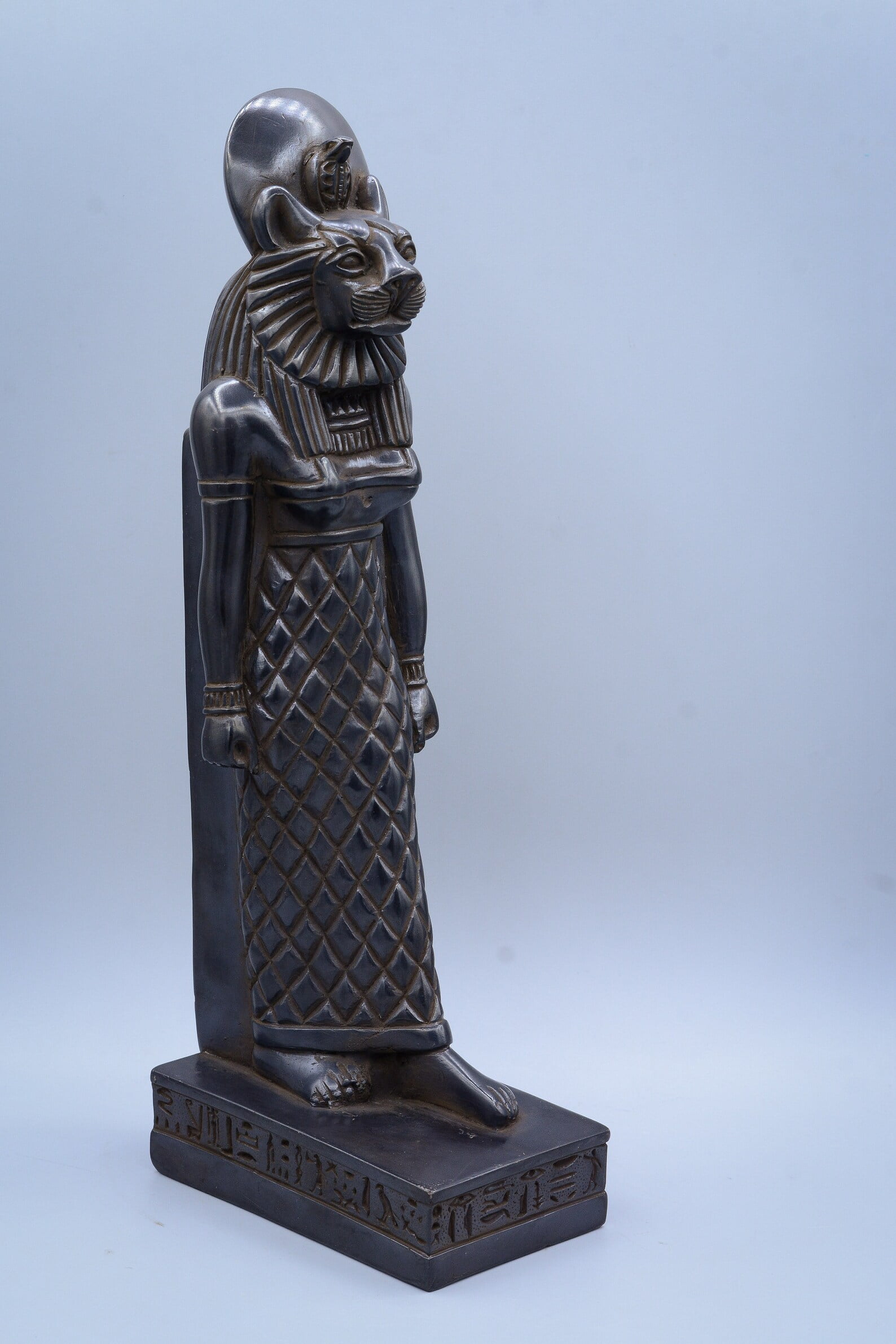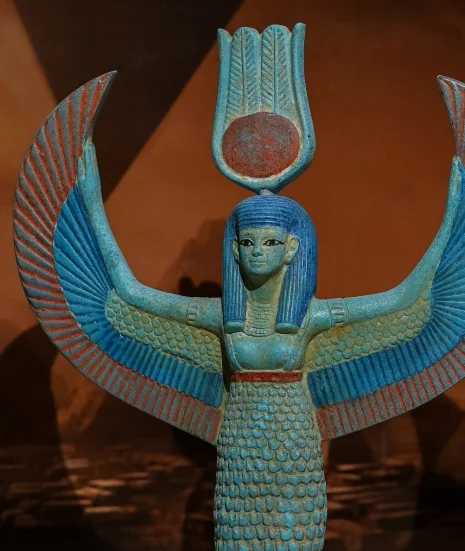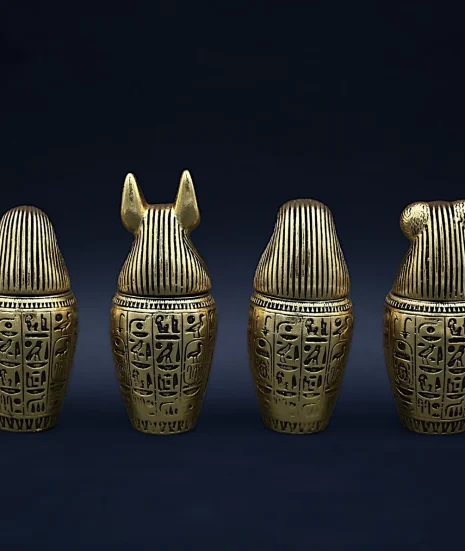- Empty cart.
- Continue Shopping
Statue goddess Sekhmet standing black made in Egypt
Original price was: 119,00 $.95,00 $Current price is: 95,00 $.
Handmade
Materials: basalt stone
Made in Egypt
weight: 1.100 kg
History
Sekhmet is an ancient Egyptian Goddess of war and destruction, plagues and healing. Her name means “The Powerful One,” and She is linked in some tales with Hathor. She is depicted as a woman with the head of a lioness, sometimes also with the sun disk and uraeus on Her headdress, Who symbolizes the destructive heat of the sun. Sekhmet, Her husband Ptah, and Their son Nefertum or Imhotep make up a triad of Deities especially worshipped in Memphis. She is also closely connected with Bast, the cat-headed Goddess of pleasure and luxury.
The tale is that Ra, the old king of the Gods, became angry with wayward humankind and in His wrath ripped out His own eye and threw it at mankind. This Divine eye became the Goddess Sekhmet, Who in the form of a lioness set about slaughtering humans, butchering them and drinking their blood. Ra, seeing this, realized that at the rate She was going no one would be left on Earth and tried to calm Her. But She refused to listen, joying in killing. So Ra then filled a lake with a mixture of beer and pomegranate juice, and Sekhmet, thinking it blood, drank the whole thing. . .and then fell asleep. When She woke the next morning, She was much calmer, though She had a terrible headache!
Sekhmet, though sometimes a violent Goddess, was however also known as a healer who set and cured broken bones. She is said to cause epidemics when She is not honored properly; but when She is, She can stop them as well.
Sekhmet is the wife of Ptah, the patron of artisans, and their son is Nefertum. Later the deified architect Imhotep was named Her son. Imhotep was a real man who worked under the third dynasty pharoah Djoser and was responsible for building the Step Pyramid, the very first pyramid. After his death He was worshipped as a God, and became the patron of doctors. Miraculous cures were His specialty.
Sekhmet in a reading indicates issues of revenge and anger, and a warning not to get carried away. In this situation it is very easy to go too far and let things get out of control. Or it can indicate that old grudges and patterns are getting in the way of needed change. Let these things go, and work on forgiveness. Remember, Sekhmet’s tale of massacre is sometimes told of Hathor, meaning that when we can let go of our anger and forgive old hurts, joy and celebration are waiting for us.
Alternate spellings: Sakhmet, Sekhemet
Only logged in customers who have purchased this product may leave a review.
Shipping Details
Where do you ship from?
We ship From Egypt as all of the Pieces are genuinely handmade by Egyptian Hands imitating our Ancient Egyptian grandparent's Techniques.
Do you ship internationally?
Yes, we ship all products to most continents and countries across the world. You can order online and the order will be shipping to your home door by the DHL Express shipping with a tracking code number. we will still follow up with you until you receive your order. Now we offer free shipping worldwide.
What is the shipping cost?
Now we offer free shipping worldwide.
When will I receive my item after ordering from your online antiques store?
Once you place your order, our team swiftly prepares your items for shipping. This preparation time varies according to the product type or material. On averages, it takes 2 to 3 business days to prepare your order and 5 business days for shipping.
For handmade products, ( Papyrus and Statues)it may take up to 5 business days to prepare the handmade item and 5 days for shipping. Some antique products require investigation from three specialized committees and archaeologists from the Egyptian Ministry of Antiques before shipping to ensure that it is only a replica, not an original piece. Usually, this process takes up to 3 days, they will be shipped. Your patience is highly appreciated.
I need to return or Exchange an Item?
All sales on Ready-to- Order parcels are final and non-refundable. However, we accept returns and exchanges in case the item you have received arrives defective. In this case, you have to send back the item in a maximum of 14 days. As long as it remains in its original new condition, unworn, unaltered, and free of any damage by the customer. We guarantee a full refund upon receipt (excluding delivery charges) or exchange the item.























Reviews
There are no reviews yet.